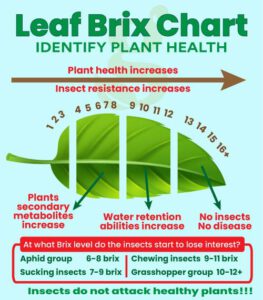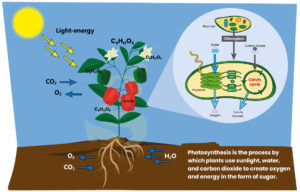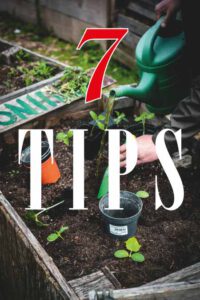
Brix in relation to crop health and quality
Brix in relatie tot gezondheid en kwaliteit van gewassen. De zoete wetenschap van Brix. Brix in relatie tot gezondheid en kwaliteit van gewassen. Brix-waarde verwijst
More yield from better quality
All in just 5 products
25+ years of fertilizer experience
Better and cheaper
Easy to use

Biostimulants make plants stronger and more resilient to abiotic stress factors in particular. Examples include stress caused by over-watering or dehydration, or stress caused by extremely high or low temperatures. The addition of biostimulants improves the crop's ability to absorb nutrients. Also, all nutritional processes of the crop are optimally stimulated. This results in an improved quality of the crop with a higher yield.
There are several organic additives that can be counted as biostimulants. Examples include:
Humic acid
Fulvinic acid
Aminozuur
Seaweed and algae extracts
herbal extracts
Microorganisms such as: Beneficial bacteria and Mycorrhyizal fungi.
Humic fulvic and amino acids, like seaweed extracts, are already frequently added by various nutrient producers. The added value of using these raw materials have long been recognized by growers around the world.
But there is more, much more. There are still countless botanical additives that can be used as biostimulants. Many botanicals contain plant hormones in addition to various nutrients. The use of synthetic hormones is prohibited. The use of organic hormones obtained from plant extracts is not.
Plant hormones are natural plant growth regulators (PGRs). These plant hormones are molecules without any nutritional value. They serve as signaling agents and stimulate the crop to exhibit a certain specific behavior. For example, one will stimulate root growth where another will affect fruit set.
Gen1:11 has been looking into the use of various extracts in its products for some time. Besides the usual biostimulants common within the plant food industry, we dived deeper into the world of plant extracts.
Within the cosmetics and health industry, numerous extractions have been used in various products for decades. By first looking at what is desirable during a particular period of growth and flowering, we have begun to look at crops that contain those specific nutrients or plant hormones.
This is how we extract organic Silica from horsetail. In our search for organic Silica, we first started working with extraction from nettles. Using nettle extraction by cold tea has long been used by many gardeners. However, the horsetail, labeled by many as a nasty weed, contains more Silica than the nettles.
From the bark of willows we extract Salicylic Acid and Auxins. Salicylic acid is a natural defense that makes the plant more resilient and thus healthier. Auxins, in the right amount, stimulate root formation. Thus, a lower concentration will promote root growth and a higher concentration will promote flowering.
Alfalfa contains a wealth of nutrients that have been shown to be beneficial to plant growth. It contains the following valuable nutrients, among others; Nitrogen, potassium, phosphorus, calcium, magnesium, sulfur, manganese, iron, boron, copper and zinc - Vitamins and amino acids.
In addition to all these valuable nutrients, alfalfa also contains a powerful growth stimulator - Triacontanol. This is a powerful organic growth hormone. This powerful natural growth stimulator supports overall growth at every stage of crop development.
Gen1:11 has added a range of water-soluble biostimulants to the basic Organo mineral line and do not need to be purchased separately. At each stage of growth and flowering we have added specific biostimulants. Thus, as a creator, you have a balanced nutrient line supplemented with nature's most valuable stimulants. Biostimulants can be given with the feed water, as a foliar feed or added to the growing medium.

Brix in relatie tot gezondheid en kwaliteit van gewassen. De zoete wetenschap van Brix. Brix in relatie tot gezondheid en kwaliteit van gewassen. Brix-waarde verwijst

Het endocannabinoïde systeem begrijpen Een korte handleiding voor CB1- en CB2-receptoren Het endocannabinoïde systeem (ECS) speelt een fundamentele rol bij het reguleren van verschillende fysiologische

Photosynthesis Photosynthesis is the process by which green plants, algae and some bacteria convert light energy into energy in the form of glucose. This process mainly takes place

7 handy tips to prepare for the new garden season Gardening tasks when the spring jitters strike: Spring is a time of renewal and

The development of hydroponic fertilisers through the ages The history of hydroponics is a story of innovation and perseverance, rooted in the quest of the

Creating a successful indoor grow involves more than just light and water. Here are 7 tips to boost your indoor garden.
Brix in relatie tot gezondheid en kwaliteit van gewassen. De zoete wetenschap van Brix. Brix in relatie tot gezondheid en kwaliteit van gewassen. Brix-waarde verwijst
Het endocannabinoïde systeem begrijpen Een korte handleiding voor CB1- en CB2-receptoren Het endocannabinoïde systeem (ECS) speelt een fundamentele rol bij het reguleren van verschillende fysiologische
Photosynthesis Photosynthesis is the process by which green plants, algae and some bacteria convert light energy into energy in the form of glucose. This process mainly takes place
7 handy tips to prepare for the new garden season Gardening tasks when the spring jitters strike: Spring is a time of renewal and
The development of hydroponic fertilisers through the ages The history of hydroponics is a story of innovation and perseverance, rooted in the quest of the
Creating a successful indoor grow involves more than just light and water. Here are 7 tips to boost your indoor garden.
Home » Biostimulants enrich your fertilizers

Because growing your own is a craft. It takes time, energy, focus, attention, maybe even love. At your own pace, in your own environment. You are the creator.